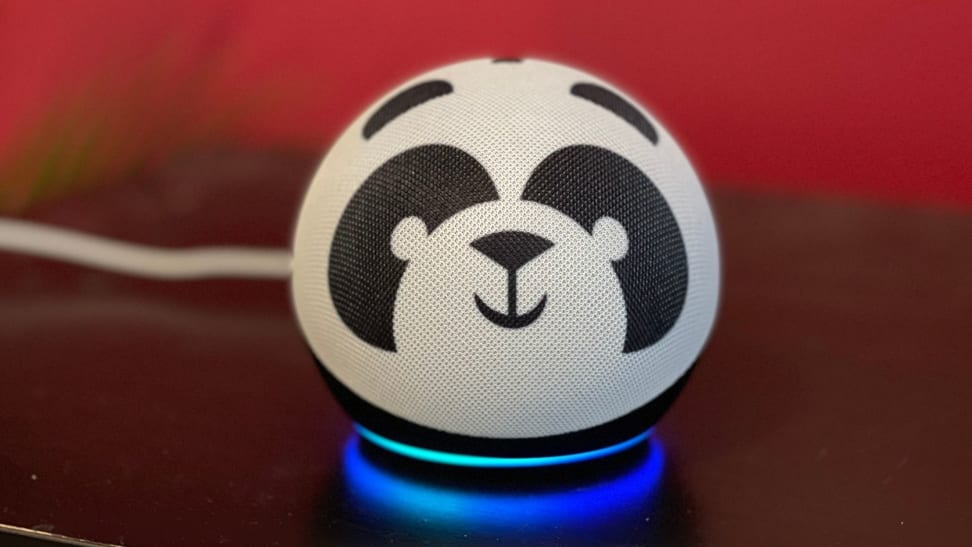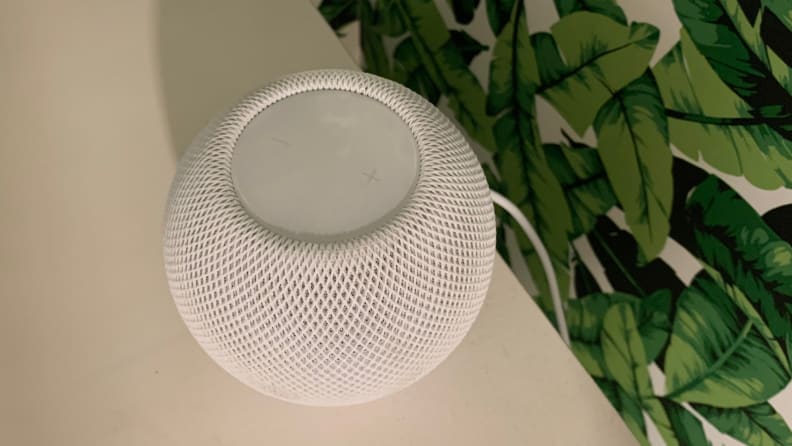How to enable parental controls on smart speakers
Make sure these protective settings are in place
 Credit:
Reviewed / Rachel Murphy
Credit:
Reviewed / Rachel Murphy
Products are chosen independently by our editors. Purchases made through our links may earn us a commission.
Kids and technology, especially Wi-Fi-enabled devices like smart speakers, can be a slippery slope. After all, you don’t want a smart assistant like Alexa accidentally rattling off inappropriate answers to your second-grader’s silly questions. With the right parental controls in place, devices like Amazon Echo, Google Nest, and Apple HomeKit smart speakers can be a convenient family tool.
These devices work as household intercoms, so you can conveniently round up your brood for dinner in one fell swoop, as well as a way to set reminders and alarms to keep kids on track (which, in my experience, leads to less nagging and better communication, especially on hectic school mornings).
Before placing a smart speaker in your kid’s room, there are certain kid-friendly parameters to enable. Here is how you can enable parental controls on smart speakers.
How to enable parental controls on Amazon Echo smart speakers

Amazon Kids parental controls can be applied to any of your Echo devices, but we like this kid-friendly fourth-gen Echo Dot for a fun and stylish smart speaker.
1. Open the Amazon Alexa app. 2. Tap Devices in the bottom menu bar. 3. Tap Echo & Alexa and select the device you want to enable controls on. 4. Tap the wheel icon in the upper lefthand corner to open the device’s settings. 5. Under General, tap Amazon Kids. 6. Tap the button to toggle on Amazon Kids and follow the in-app prompts to complete the setup.
Amazon Kids requires a profile for each child during the setup process, which you then assign to the smart speaker of your choice. Amazon Kids is available on any Amazon Echo smart speaker or display. For a speaker with a kid-friendly design, check out the fourth-gen Echo Dot Kids, available in adorable Tiger and Panda designs. You can manage each profile via the Amazon Parent Dashboard.
Amazon Kids automatically enables features like Alexa Communication, allowing them to call anyone from an approved list of contacts with an Echo device or Alexa app, and links your current music service to the speaker (defaulting to the explicit lyrics filter). The service also ensures kid-friendly Alexa responses, like jokes, stories, and answers to questions. To make changes to your Amazon Kids parental controls, open up the settings for the device in the Alexa app.
How to enable parental controls on Google Nest smart speakers

Google's parental controls work across smart speakers, like the Nest Mini, and smart displays, like the second-gen Nest Hub (pictured).
Parental controls are available for all of your Google Assistant devices like the Nest Mini smart speaker and the Nest Hub Max smart display. Unlike Amazon Kids, which allows you to enable parental controls per device, Google uses voice recognition to know when Assistant interacts with your child. If you live in a home with multiple speakers or displays, the blanket coverage can be a huge benefit.
Here’s how to enable parental controls for Google Nest devices.
1. Open Google’s Family Link app for iOS and Android. (Make sure you sign in with the same Google account you use for Google Home.) 2. Select your child’s profile. (If your child doesn’t have one, you can set up a Family Link profile in about 15 minutes.) 3. Tap Manage Settings > Google Assistant > Parental Controls > Set Up >. 4. Follow the on-screen prompts to set your preferred settings for the profile. Close out to save. 5. With your child nearby, open the Google Home app. (Alternatively this can be set up with a Nest smart display by saying, “Hey Google, learn my voice.”) 6. Tap Home > Settings > Google Assistant > Other devices. 7. Tap Get Started and follow the in-app steps to complete the setup process.
If you have multiple kids in the home using Google smart speakers, you will need to complete the process for each. With parental controls in place, you can set screen time limits, allow/block apps, and locate your child’s devices.
Google's parental controls for Nest speakers and displays also prevents access to news and podcasts, offers media controls for music and videos, and enables downtime restrictions. You can set different parental controls for each of your children to ensure they are accessing age-appropriate content.
How to enable parental controls on the Apple HomePod Mini

The HomePod Mini is Apple's only smart speaker.
Apple does not have defined parental controls for smart speakers like Amazon and Google do, but there are some things to know if you’re considering buying a HomePod Mini for your child.
In the Home app, available exclusively for iOS devices, create a profile for your kid but it must be attached to an iCloud account. (Other email providers, like Gmail, are not compatible and can therefore not be invited to join a Home and utilize these features.) This is where you can manage your child’s interactions with the HomePod Mini, including features like explicit content filters for any music and podcasts they may put on.
In order for the feature to work, you must also teach Siri to recognize your child’s voice by enabling Personal Requests in the device’s settings of the Home app. This is how Siri will know to play the appropriate songs and podcasts, depending on which voice is associated with what profile.
These are the extent of the HomePod Mini’s parental controls, which, at the time of publication, is Apple’s only smart speaker.
The product experts at Reviewed have all your shopping needs covered. Follow Reviewed on Facebook, Twitter, Instagram, TikTok, or Flipboard for the latest deals, product reviews, and more. Prices were accurate at the time this article was published but may change over time.


